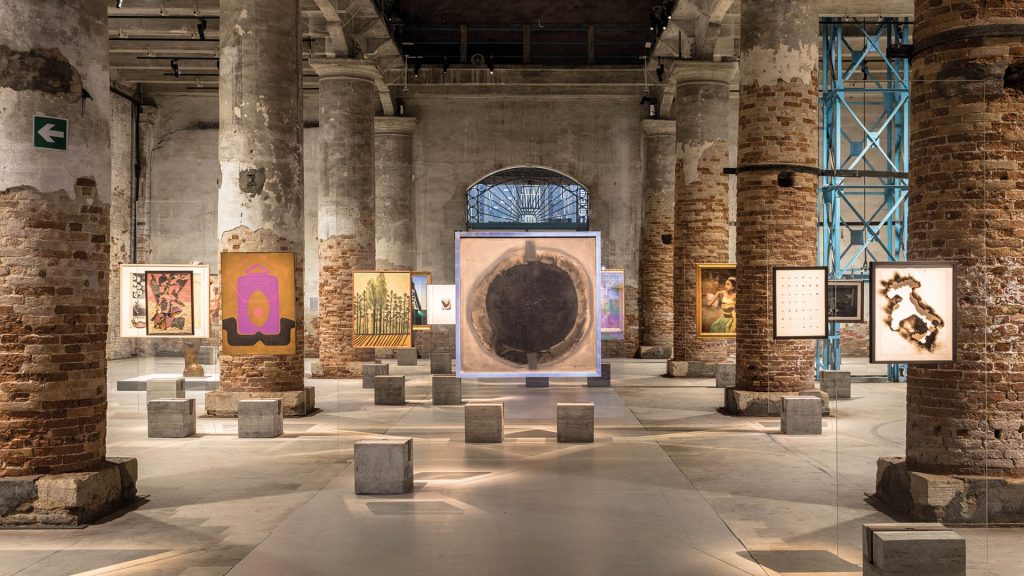
As you walk through the Corderie hall at Arsenale, you’ll follow the path Adriano Pedrosa created for the main exhibition at the Art Biennale: Foreigners Everywhere down to subsection Italians Everywhere and to the starting point of a journey across the Atlantic to Sao Paulo.
If one ever visited the MASP Museum in São Paulo, they will feel exciting familiarity and curious alienation for such an experience being held thousands of miles away from its place of origin. Brazilians must be proud to be protagonists among protagonists, while all other visitors will love this expo-graphic marvel and the appreciation for creative language that architect Lina Bo Bardi designed in a moment of genius that eternalized her. In fact, a large section of the Corderie is populated with the easels she designed, revisited by São Paulo’s studio Metro Arquitetos, made with glass, lumber, and concrete –the same materials to be found in Brazilian modernism. Inspired by the idea of taking the art off the wall and allowing visitors to walk around it, Bo Bardi’s vision of a painting gallery chips away at the mere ‘image’ to give back to the ‘item’. This kind of staging is perfect for the Corderie, where visitors walk both ways.

Adriano Pedrosa welcomes the Biennale public into a happy corner of Italian-Brazilian art history. To offer a section on the Italian diaspora is a necessarily complex task, with open issues that range from uprooting to adaptation, redefinition of expectations, sense of belonging, identification of the immigrant. Different, polarizing interpretations must be given proper attention, too, as Italians Everywhere might also be read under the negative connotation theorized by Brazilian decolonization doctrine, which sees late-nineteenth century immigration to Brazil as a branqueamento, a whitening of Brazilian citizenry. At any rate – what seems to be the criterion for the inclusion in the exhibition’s subsection is the place of birth, binding it all together. Curator Pedrosa also included Italians who grew up in the Americas, more generally, and art of diverse historical connotation. Visitors will love the far-reaching scope of the historical offer, which allows to understand and contextualize the production of every individual artist, like Eliseu Visconti (present with his famous self-portrait), Alfredo Volpi, Anita Malfatti, Waldemar Cordeiro (the founder of the Rupture movement), and the immense Anna Maria Maiolino, whom Pedrosa awarded the Golden Lion for Lifetime Achievement. We shall end this short presentation with a few verses from Amadeo Luciano Lorenzato’s memoir. Lorenzato is himself present in the Italians Everywhere section.
“He bows before no school
Neither to this or that fashion
He belongs to no clique
He paints whatever strikes his fancy”
(Lorenzato, 1948)